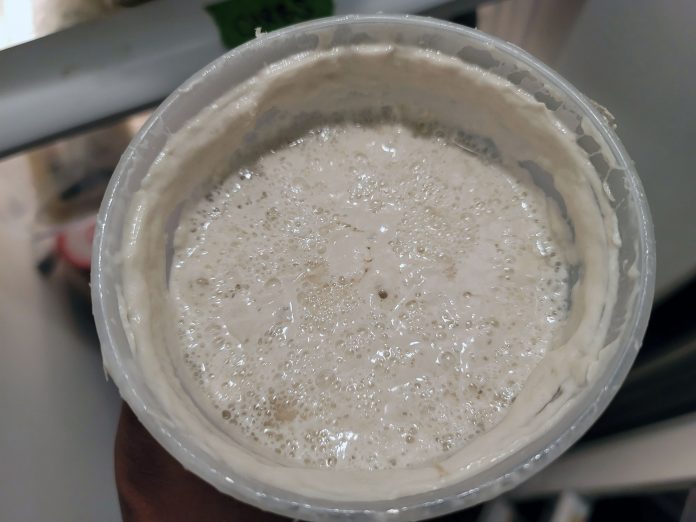A fresh, live yeast starter is the perfect ingredient to include in your bread, pizza crust and other baked recipes. There is some confusion, however, about the differences between live yeast and the dried yeast alternative. Although they can be used for similar results, there are some key differences.
A fresh yeast starter is basically dough which has been made with bacteria and yeast. The word ‘yeast’ can refer to either the dried kind you would buy in the store, or a ‘starter’ made with a sourdough starter or a similar leavening product.
Live Yeast vs Dried Yeast
Fresh yeast is moist and soft, and the usual choice for baking professionals. It is sometimes known as cake yeast because it is pressed into a block or cake. It has to be stored in the refrigerator or freezer because it is very perishable. Fresh yeast will keep for a few days in the refrigerator or several months in the freezer. You need to proof live yeast before using it in a recipe.
Dried yeast or dried live yeast, on the other hand, is made by pressing and drying live yeast. As you would expect, dried yeast can keep a lot longer than fresh, and there is no need to refrigerate it until the package has been opened. There are two kinds of dried yeast: active dried yeast and fast-acting dried yeast. And then, on top of that, you have a fresh yeast starter, which is a homemade live yeast mixture.
How to Make a Fresh Yeast Starter
A yeast starter can be made at home using flour and water. It is left out, covered, for several days and the bacteria in the air reacts with it. You ‘feed’ a homemade dough starter by removing however much you need for your recipe and then replacing the amount you have used with more flour and water. If you are not using it, you can discard some and replace it with more flour and water, to refresh it and inhibit the growth of mold.
Room temperature starter should be fed every other day while refrigerated starter requires weekly feeding. If you end up with more starter than you need, you can simply remove and discard some or whip up some banana bread or English muffins with it, or share it with friends! When prepared, refreshed and fed properly, fresh yeast can keep indefinitely.
Homemade fresh yeast starter should be similar to a thick batter in consistency. You need more of it than dried yeast to make breads and other recipes, and it also makes more time to work. A fresh yeast starter might not have the same convenience as dried yeast but the recipes you make with it will be healthier and tastier, so it is well worth making.
How Much Fresh Yeast to Use Instead of Dried
Different types of yeast can be substituted in recipes, although the quantities will need to be adjusted. For example, you would typically use half the amount of dry yeast instead of fresh yeast in a recipe or about a quarter of the amount of instant yeast. So if say a recipe calls for half an ounce of dry yeast, you would use 2 ounces of fresh yeast in its place.
Most dried yeast packages will tell you how much to add to a specific amount of flour, although if a recipe has a lot of fats, eggs or salt you might need to add extra or give the yeast extra time to rise. Fresh yeast is similar in that recipes with a lot of butter or another fat, or eggs, can slow down the proofing speed.
What Can You Make with a Fresh Yeast Starter?
There are all kinds of breads, buns, muffins, rolls, pizza crust recipes and more that you can make with your fresh starter.
One very popular recipe is Amish friendship bread, also known as German friendship bread. This involves keeping a fresh yeast starter and feeding it. As the amount increases, you share it out among your friends, hence the name, and then they feed it and do the same!
This recipe uses milk, yeast and sugar as well as the flour and water. The reason it keeps so well is that it contains Lactobacillus and other beneficial lactic acid bacteria to convert flour carbohydrates and milk lactose into lactic acid. This keeps the starter acidic to stop the growth of bad bacteria.
Using a homemade starter for your bread recipes results in a more nutritious loaf because means you need fewer unhealthy ingredients like oil and sugar in the recipe. The acids created by bacteria and wild yeast help break down the proteins in the flour, making the bread easier to digest.
So if you have been curious about trying a fresh yeast starter, why not give it a try? This method has been used for centuries, and is the traditional way to make bread, as well as many other delicious dishes.



